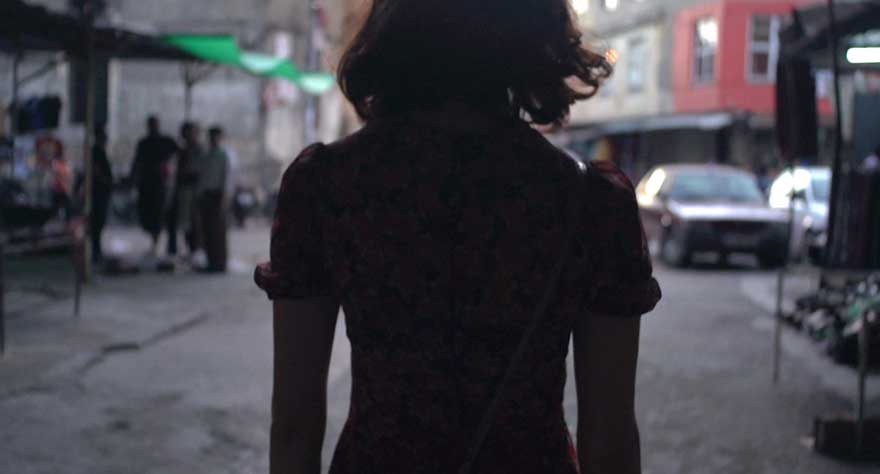
In the wake of the Arab Spring, a lesbian blogger goes missing, making for a fascinating and layered story.

In the wake of the Arab Spring, a lesbian blogger goes missing, making for a fascinating and layered story.
In 2011, I didn’t believe in the power of Twitter. Like many dissenters, I didn’t understand why we needed multiple platforms to complain to our friends about how awful Mondays are. My perspective changed during the Arab Spring, when I started following an NPR journalist named Andy Carvin. A tool can be used in many ways, and in March 2011, Carvin and his Twitter following debunked news reports about Israeli weapons being found in Libya—simply by sharing images and research over Twitter. It’s all compiled in this fascinated Storify story. With absolutely no exaggeration, I can say my mind was totally blown.
Given his presence on social media and in Western reporting on the Arab Spring, it’s no surprise that Carvin makes an appearance in director Sophie Deraspe’s new documentary, A Gay Girl in Damascus: The Amina Profile, a thrilling retelling of the online maelstrom that occurred when a lesbian Arab blogger named Amina went missing in June 2011. While the confusing presence of technology in our lives is a major topic of the film—as well as the growing unrest in Damascus following the Arab Spring—the heart of this documentary is a love story: the bewitching tale of a Syrian woman who meets a French-Canadian named Sandra online, a relationship which emboldens both women to stand up for their beliefs. This has greater inherent stakes for Amina as she attends protests in Damascus (where a man is shot and killed just beside her).
And, indeed, the hidden fear of both women is realized when, 30 minutes into the movie, Sandra gets an email saying Amina’s been kidnapped. The outcry on social media is impassioned and hysterical. It only gets worse when Andy Carvin types four simple words:
“Has anyone met Amina?”
The insinuation would quickly become “because I’m starting to think she’s not real.” Oh, what kind of rabbit hole have you opened, Mr. Carvin? Is Twitter a tool to catch journalists when they slip up, or can it be a dangerous place where novice investigators derail a case—one with life and death consequences?
The bulk of the film follows from that question, and the men and women entangled in the Amina case extend far and wide: Amina’s girlfriend, her online friends (which, while platonic, seem to hold just as passionate of a bond), reporters, crisis interventionists, Syrian gay-rights activists, and more. The voices are varied and span several continents, but everyone shares one common goal: looking for a girl, who, if Syrian tradition stands true, is probably suffering the immediate threat of torture and even death. But a fringe that believes Amina is a con artist undermines the entire investigation.
Where there is never conflict is in the recreated exchanges between Sandra and Amina based on instant messenger transcripts. Sandra repeats the refrain, “be careful, love.” Of course, when there is not a ton of archival footage to rely on, documentaries sometimes opt to create their own imagery—and the filmmakers do here, often portraying a young Arab woman in her room or walking the streets. The way the filmmakers recreate scenes, sometimes sensual, sometimes pensive and reflective, don’t seem just like filler in this film. They’re essential to its tone—instant messages just can’t fully show what being in a relationship feels like. After all, at the heart of this story is a Canadian woman deeply invested in a woman she hasn’t heard from in weeks, so the blurring of fact and fiction does wonders to maintain a tone of conflicting emotions—both lust and confusion. Their romance is intense and passionate, feeling more like a pair of university students falling in love for the first time rather than two 30-somethings behind computer monitors. The depictions of Amina stay abstract and short, like tiny strings of poetry amidst the dark backdrop of a region in war. By the time Amina is kidnapped, Sandra’s terror matches the viewer’s terror.
Documentaries can’t always nail the narrative arc, but A Gay Girl in Damascus certainly does. It’s impossible to not feel invested in Amina’s plight—and by extension the twisted emotions of her friends and lover. By piling on impassioned interview after impassioned interview with everyone who knew Amina, the love story ultimately wins. If there is any criticism to be delivered here, it’s that the actual coverage of the conflict in Syria, and the effects of many journalists choosing to cover Amina versus other conflicts, is only done in a cursory way. One of the conflicts Sandra and her supporters faced was the growing criticism that resources used on Amina could have been used on more important/more universal stories. Perhaps my bias of seeing just how revolutionary some of the informal Twitter reporting was leads me to believe that this film could have been stronger if we weren’t just told, offhand, about one or two stories that were neglected that week, but if we were also shown some of the incredible ways journalism was done right. Harping on the idea that more stories could have been covered, without getting specific, comes off as a little didactic, and that could have totally been avoided. Real people, both journalists and protesters, did some amazing things in 2011 with smartphones and social media accounts.
But I get it. In a film about one topic, you have to pick your battles. And in delivering a modern-day love story-turned-mystery with more twists than your average blockbuster, A Gay Girl in Damascus: The Amina Profile delivers. And for its part, it offers some necessary cautionary tales for the digital age.
A version of this review was first published as part of our 2015 Hot Docs Film Festival coverage.